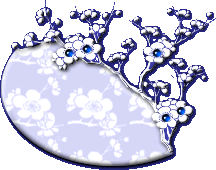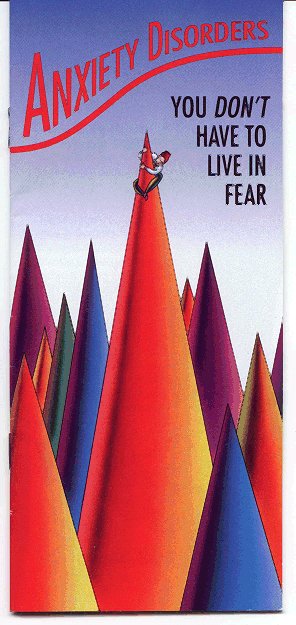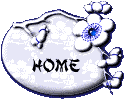




Celine Dion
Deep within each
heart There lies a magic spark
That lights the fire of our imagination And
since
the dawn of man The strength of just �I can�
Has brought together
people of all nations
There's nothing ordinary In the living of each
day
There's a special part Everyone of us will play
Feel the flame forever
burn Teaching lessons we must learn
To bring us closer to the power of the
dream
As the world gives us its best To stand
apart from all the rest It
is the power
of the dream that brings us here
Your mind will take you
far The rest is
just pure heart You'll find your fate is all
your own
creation And every boy and girl
As they come into this world They
bring
the gift of hope and inspiration
Feel the flame forever burn Teaching
lessons
we must learn To bring us closer
to the power of the
dream
The world unites in hope and peace
We pray that it will always
be
It is the power of the dream
that brings us here
There's so much
strength in all of us
Every woman, child and man It's the
moment that you
think you can't
You'll discover that you can
Feel the flame forever
burn Teaching lessons
we must learn To bring us closer
to the power of the
dream
The world unites in hope and peace We pray
that it will always
be It is the
power of the dream that brings us here
Feel the flame
forever burn Teaching lessons
we must learn To bring us closer
to the
power of the dream
The world unites in hope and peace
We pray that it
will always be
It is the power of the dream
that brings us
here
The power of the dream The faith in things
unseen The courage to
embrace your fear
No matter where you are To reach for your
own star To
realize the power of the dream
To realize the power of the dream

Anxiety
Disorders
Everybody knows what it's like to feel anxious,--
the
butterflies in your stomach before a
first date, the tension you feel when
your boss
is angry, the way your heart pounds if you're
in danger.
Anxiety rouses you to action. It
gears you up to face a
threatening
situation. It makes you study harder for
that exam, and keeps
you on your toes
when you're making a speech. In general,
it helps you
cope.
But if you have an anxiety disorder, this
normally helpful
emotion can do just the opposite--
it can keep you from coping and can
disrupt
your daily life. Anxiety disorders aren't just a case
of "nerves."
They are illnesses, often related
to the biological makeup and life
experiences
of the individual, and they frequently run
in families. There
are several types of anxiety
disorders, each with it's own distinct
features.
An anxiety disorder may make you feel
anxious most of the
time, without any
apparent reason. Or the anxious feelings may be
so
uncomfortable that to avoid them you may
stop some everyday activities. Or
you may
have occasional bouts of anxiety so intense
Anxiety disorders are the most common of all
the
mental disorders. At the National Institute
of Mental Health (NIMH),the
Federal agency that
conducts and supports research related to mental
disorders,
mental health, and the brain, scientists are
learning more and
more about the nature of
anxiety disorders, their causes, and how
to
alleviate them. NIMH also conducts educational
outreach activities
about anxiety disorders and
other mental illnesses.
Many people
misunderstand these disorders and think
individuals should be able to
overcome the symptoms
by sheer willpower. Wishing the symptoms away
does
not work--but there are treatments
that can help.
This gives brief
explanations of generalized anxiety
disorder,panic disorder (which is
sometimes
accompanied by agoraphobia). More detailed information on some
of
these anxiety disorders is available through NIMH or
other sources.
(See the listings at the end.)

Generalized Anxiety Disorder
A Patients account:
--
"I always thought I was just a worrier.
I'd feel keyed up and unable to
relax.
At times it would come and go,
and at times it would be
constant.
It could go on for days. I'd worry
about what I was going to fix
for a
dinner party, or what would be a great
present for somebody. I just
couldn't let something go."
-- "I'd have terrible sleeping
problems.
There were times I'd wake up wired
in the morning or in the
middle of the
night. I had trouble concentrating, even reading
the
newspaper or a novel.
Sometimes I'd feel a little lightheaded.
My heart
would race or pound.
And that would make me worry more."
Generalized
anxiety disorder (GAD) is much
more than the normal anxiety people
experience day to day. It's chronic
and exaggerated worry and
tension,
even though nothing seems to provoke it.
Having this disorder
means always anticipating
disaster, often worrying excessively about
health,
money, family, or work. Sometimes, though,
the source of the worry
is hard to
pinpoint. Simply the thought of getting
through the day
provokes anxiety.
People with GAD can't seem to shake
their
concerns,even though they usually realize
that their anxiety is
more intense than the
situation warrants. People with GAD also seem
unable
to relax. They often have trouble
falling or staying asleep. Their worries
are
accompanied by physical symptoms, especially trembling,
twitching,
muscle tension, headaches, irritability, sweating,
or hot flashes. They may
feel lightheaded
or out of breath. They may feel nauseated
or have to go
to the bathroom frequently.
Or they might feel as though they
have a lump
in the throat.
Many individuals with GAD startle more easily
than
other people. They tend to feel
tired, have trouble concentrating,
and
sometimes suffer depression, too.
Usually the impairment associated with
GAD is
mild and people with the disorder don't feel
too restricted in
social settings or on
the job. Unlike many other anxiety disorders,
people
with GAD don't characteristically
avoid certain situations as a result
of
their disorder. However, if severe, GAD can be
very debilitating,
making it difficult
to carry out even the most ordinary
daily activities.
GAD comes on gradually and most often
hits people in childhood or
adolescence,
but can begin in adulthood, too. It's more
common in women
than in men and often
occurs in relatives of affected persons.
It's
diagnosed when someone spends at least 6 months
worried excessively
about a number of everyday problems.
Having GAD means always
anticipating disaster, often
worrying excessively about health, money,
family,
or work. Worries are often accompanied by
physical symptoms like
trembling, muscle tension, and nausea.
In general, the symptoms of GAD
seem
to diminish with age. Successful treatment
may include a medication
called buspirone.
Research into the effectiveness of other
medications,
such as benzodiazepines and antidepressants,
is ongoing. Also useful are
cognitive-behavioral
therapy, relaxation techniques, and biofeedback
to
control muscle tension.

Panic Disorder
A Patients account
--"It started
10 years ago. I was sitting in
a seminar in a hotel and this thing
came
out of the clear blue. I felt like I was dying."
"For me, a
panic attack is almost a violent experience.
I feel like I'm going insane.
It makes me feel
like I'm losing control in a very extreme way.
My heart
pounds really hard, things seem unreal, and
there's this very strong feeling
of impending doom."
"In between attacks there is this dread and
anxiety
that it's going to happen again. It can be very
debilitating,
trying to escape those feelings of panic."
People with panic disorder
have feelings of terror
that strike suddenly and repeatedly with no warning.
They can't predict when an attack will occur,
and many develop intense
anxiety between episodes,
worrying when and where the next one will
strike.
In between times there is a persistent,
lingering worry that
another attack could come any minute.
When a panic attack strikes, most
likely your
heart pounds and you may feel sweaty, weak,
faint, or dizzy.
Your hands may tingle or
feel numb, and you might feel flushed or
chilled.
You may have chest pain or smothering sensations,
a sense of
unreality, or fear of impending
doom or loss of control. You may
genuinely
believe you're having a heart attack or stroke,
losing your
mind, or on the verge of death.
Attacks can occur any time, even during
nondream sleep.
While most attacks average a couple of
minutes,
occasionally they can go on for up to 10 minutes.
In rare cases,
they may last an hour or more.
Panic disorder strikes between 3 and 6
million Americans,
and is twice as common in women as in men.
It can
appear at any age--in children or
in the elderly--but most often it
begins
in young adults. Not everyone who experiences panic
attacks will
develop panic disorder-- for example,
many people have one attack but never
have another.
For those who do have panic disorder, though,
it's important
to seek treatment.
Untreated, the disorder can become very disabling.
Panic disorder is often accompanied by other conditions
such as
depression or alcoholism, and may
spawn phobias, which can develop in places
or
situations where panic attacks have occurred. For example,
if a panic
attack strikes while you're riding an
elevator, you may develop a fear of
elevators
and perhaps start avoiding them.
Some people's lives become
greatly restricted--they avoid
normal, everyday activities such as grocery
shopping,
driving, or in some cases even leaving
the house. Or, they may
be able to confront
a feared situation only if accompanied by a
spouse or
other trusted person. Basically, they avoid
any situation they fear would
make them feel helpless
if a panic attack occurs. When people's
lives
become so restricted by the disorder, as happens
in about one-third
of all people with panic disorder,
the condition is called agoraphobia. A
tendency toward
panic disorder and agoraphobia runs in
families.
Nevertheless, early treatment of panic disorder
can often stop
the progression to agoraphobia.
Studies have shown that proper
treatment--a type
of psychotherapy called cognitive-behavioral
therapy,
medications, or possibly a combination
of the two--helps 70 to 90 percent of
people
with panic disorder. Significant improvement
is usually seen within
6 to 8 weeks.
Cognitive-behavioral approaches teach patients how
to
view the panic situations differently
and demonstrate ways to reduce anxiety,
using
breathing exercises or techniques to refocus attention,
for example.
Another technique used in cognitive-behavioral
therapy, called exposure
therapy, can often help alleviate
the phobias that may result from panic
disorder.
In exposure therapy, people are very slowly exposed to
the
fearful situation until they become desensitized to it.
Some people find
the greatest relief from
panic disorder symptoms when they take
certain
prescription medications. Such medications, like
cognitive-behavioral
therapy, can help to prevent panic attacks or
reduce
their frequency and severity. Two types of medications
that have
been shown to be safe and effective
in the treatment of panic disorder
are
antidepressants and benzodiazepines.


Please
visit our site and make a difference

 Please visit our
site
Please visit our
site



 Home
Home
 My Family
My Family
 My Grandparents
My Grandparents
 Back Home
Back Home
 Friendship
Friendship
 Friends, for Dorian
Friends, for Dorian
 Poetry
Poetry
 POETRY TOO
POETRY TOO
 Page 3
Page 3
 Smooth Criminal
Smooth Criminal
 There You'll Be
There You'll Be
 WENDY
WENDY
 JOKES
JOKES
 Thoughts To Ponder
Thoughts To Ponder
 Laughter is Good For The
Soul
Laughter is Good For The
Soul
 Heart Anatomy
Heart Anatomy
 Hear About Heart Disease
Hear About Heart Disease
 Paintbrush
Paintbrush
 The Reverend and His
Wife
The Reverend and His
Wife
 Attention Deficit Hyperactive
Disorder
Attention Deficit Hyperactive
Disorder
 Attention Deficit Hyperactive Disorder,
II
Attention Deficit Hyperactive Disorder,
II
The winds of grace blow all the time. All we need do is set our
sails."
Ramakrishna

New Guestbook, Images allowed

Celine Dion
Deep within each
heart There lies a magic spark
That lights the fire of our imagination And
since
the dawn of man The strength of just �I can�
Has brought together
people of all nations
There's nothing ordinary In the living of each
day
There's a special part Everyone of us will play
Feel the flame forever
burn Teaching lessons we must learn
To bring us closer to the power of the
dream
As the world gives us its best To stand
apart from all the rest It
is the power
of the dream that brings us here
Your mind will take you
far The rest is
just pure heart You'll find your fate is all
your own
creation And every boy and girl
As they come into this world They
bring
the gift of hope and inspiration
Feel the flame forever burn Teaching
lessons
we must learn To bring us closer
to the power of the
dream
The world unites in hope and peace
We pray that it will always
be
It is the power of the dream
that brings us here
There's so much
strength in all of us
Every woman, child and man It's the
moment that you
think you can't
You'll discover that you can
Feel the flame forever
burn Teaching lessons
we must learn To bring us closer
to the power of the
dream
The world unites in hope and peace We pray
that it will always
be It is the
power of the dream that brings us here
Feel the flame
forever burn Teaching lessons
we must learn To bring us closer
to the
power of the dream
The world unites in hope and peace
We pray that it
will always be
It is the power of the dream
that brings us
here
The power of the dream The faith in things
unseen The courage to
embrace your fear
No matter where you are To reach for your
own star To
realize the power of the dream
To realize the power of the dream

Anxiety
Disorders
Everybody knows what it's like to feel anxious,--
the
butterflies in your stomach before a
first date, the tension you feel when
your boss
is angry, the way your heart pounds if you're
in danger.
Anxiety rouses you to action. It
gears you up to face a
threatening
situation. It makes you study harder for
that exam, and keeps
you on your toes
when you're making a speech. In general,
it helps you
cope.
But if you have an anxiety disorder, this
normally helpful
emotion can do just the opposite--
it can keep you from coping and can
disrupt
your daily life. Anxiety disorders aren't just a case
of "nerves."
They are illnesses, often related
to the biological makeup and life
experiences
of the individual, and they frequently run
in families. There
are several types of anxiety
disorders, each with it's own distinct
features.
An anxiety disorder may make you feel
anxious most of the
time, without any
apparent reason. Or the anxious feelings may be
so
uncomfortable that to avoid them you may
stop some everyday activities. Or
you may
have occasional bouts of anxiety so intense
Anxiety disorders are the most common of all
the
mental disorders. At the National Institute
of Mental Health (NIMH),the
Federal agency that
conducts and supports research related to mental
disorders,
mental health, and the brain, scientists are
learning more and
more about the nature of
anxiety disorders, their causes, and how
to
alleviate them. NIMH also conducts educational
outreach activities
about anxiety disorders and
other mental illnesses.
Many people
misunderstand these disorders and think
individuals should be able to
overcome the symptoms
by sheer willpower. Wishing the symptoms away
does
not work--but there are treatments
that can help.
This gives brief
explanations of generalized anxiety
disorder,panic disorder (which is
sometimes
accompanied by agoraphobia). More detailed information on some
of
these anxiety disorders is available through NIMH or
other sources.
(See the listings at the end.)

Generalized Anxiety Disorder
A Patients account:
--
"I always thought I was just a worrier.
I'd feel keyed up and unable to
relax.
At times it would come and go,
and at times it would be
constant.
It could go on for days. I'd worry
about what I was going to fix
for a
dinner party, or what would be a great
present for somebody. I just
couldn't let something go."
-- "I'd have terrible sleeping
problems.
There were times I'd wake up wired
in the morning or in the
middle of the
night. I had trouble concentrating, even reading
the
newspaper or a novel.
Sometimes I'd feel a little lightheaded.
My heart
would race or pound.
And that would make me worry more."
Generalized
anxiety disorder (GAD) is much
more than the normal anxiety people
experience day to day. It's chronic
and exaggerated worry and
tension,
even though nothing seems to provoke it.
Having this disorder
means always anticipating
disaster, often worrying excessively about
health,
money, family, or work. Sometimes, though,
the source of the worry
is hard to
pinpoint. Simply the thought of getting
through the day
provokes anxiety.
People with GAD can't seem to shake
their
concerns,even though they usually realize
that their anxiety is
more intense than the
situation warrants. People with GAD also seem
unable
to relax. They often have trouble
falling or staying asleep. Their worries
are
accompanied by physical symptoms, especially trembling,
twitching,
muscle tension, headaches, irritability, sweating,
or hot flashes. They may
feel lightheaded
or out of breath. They may feel nauseated
or have to go
to the bathroom frequently.
Or they might feel as though they
have a lump
in the throat.
Many individuals with GAD startle more easily
than
other people. They tend to feel
tired, have trouble concentrating,
and
sometimes suffer depression, too.
Usually the impairment associated with
GAD is
mild and people with the disorder don't feel
too restricted in
social settings or on
the job. Unlike many other anxiety disorders,
people
with GAD don't characteristically
avoid certain situations as a result
of
their disorder. However, if severe, GAD can be
very debilitating,
making it difficult
to carry out even the most ordinary
daily activities.
GAD comes on gradually and most often
hits people in childhood or
adolescence,
but can begin in adulthood, too. It's more
common in women
than in men and often
occurs in relatives of affected persons.
It's
diagnosed when someone spends at least 6 months
worried excessively
about a number of everyday problems.
Having GAD means always
anticipating disaster, often
worrying excessively about health, money,
family,
or work. Worries are often accompanied by
physical symptoms like
trembling, muscle tension, and nausea.
In general, the symptoms of GAD
seem
to diminish with age. Successful treatment
may include a medication
called buspirone.
Research into the effectiveness of other
medications,
such as benzodiazepines and antidepressants,
is ongoing. Also useful are
cognitive-behavioral
therapy, relaxation techniques, and biofeedback
to
control muscle tension.

Panic Disorder
A Patients account
--"It started
10 years ago. I was sitting in
a seminar in a hotel and this thing
came
out of the clear blue. I felt like I was dying."
"For me, a
panic attack is almost a violent experience.
I feel like I'm going insane.
It makes me feel
like I'm losing control in a very extreme way.
My heart
pounds really hard, things seem unreal, and
there's this very strong feeling
of impending doom."
"In between attacks there is this dread and
anxiety
that it's going to happen again. It can be very
debilitating,
trying to escape those feelings of panic."
People with panic disorder
have feelings of terror
that strike suddenly and repeatedly with no warning.
They can't predict when an attack will occur,
and many develop intense
anxiety between episodes,
worrying when and where the next one will
strike.
In between times there is a persistent,
lingering worry that
another attack could come any minute.
When a panic attack strikes, most
likely your
heart pounds and you may feel sweaty, weak,
faint, or dizzy.
Your hands may tingle or
feel numb, and you might feel flushed or
chilled.
You may have chest pain or smothering sensations,
a sense of
unreality, or fear of impending
doom or loss of control. You may
genuinely
believe you're having a heart attack or stroke,
losing your
mind, or on the verge of death.
Attacks can occur any time, even during
nondream sleep.
While most attacks average a couple of
minutes,
occasionally they can go on for up to 10 minutes.
In rare cases,
they may last an hour or more.
Panic disorder strikes between 3 and 6
million Americans,
and is twice as common in women as in men.
It can
appear at any age--in children or
in the elderly--but most often it
begins
in young adults. Not everyone who experiences panic
attacks will
develop panic disorder-- for example,
many people have one attack but never
have another.
For those who do have panic disorder, though,
it's important
to seek treatment.
Untreated, the disorder can become very disabling.
Panic disorder is often accompanied by other conditions
such as
depression or alcoholism, and may
spawn phobias, which can develop in places
or
situations where panic attacks have occurred. For example,
if a panic
attack strikes while you're riding an
elevator, you may develop a fear of
elevators
and perhaps start avoiding them.
Some people's lives become
greatly restricted--they avoid
normal, everyday activities such as grocery
shopping,
driving, or in some cases even leaving
the house. Or, they may
be able to confront
a feared situation only if accompanied by a
spouse or
other trusted person. Basically, they avoid
any situation they fear would
make them feel helpless
if a panic attack occurs. When people's
lives
become so restricted by the disorder, as happens
in about one-third
of all people with panic disorder,
the condition is called agoraphobia. A
tendency toward
panic disorder and agoraphobia runs in
families.
Nevertheless, early treatment of panic disorder
can often stop
the progression to agoraphobia.
Studies have shown that proper
treatment--a type
of psychotherapy called cognitive-behavioral
therapy,
medications, or possibly a combination
of the two--helps 70 to 90 percent of
people
with panic disorder. Significant improvement
is usually seen within
6 to 8 weeks.
Cognitive-behavioral approaches teach patients how
to
view the panic situations differently
and demonstrate ways to reduce anxiety,
using
breathing exercises or techniques to refocus attention,
for example.
Another technique used in cognitive-behavioral
therapy, called exposure
therapy, can often help alleviate
the phobias that may result from panic
disorder.
In exposure therapy, people are very slowly exposed to
the
fearful situation until they become desensitized to it.
Some people find
the greatest relief from
panic disorder symptoms when they take
certain
prescription medications. Such medications, like
cognitive-behavioral
therapy, can help to prevent panic attacks or
reduce
their frequency and severity. Two types of medications
that have
been shown to be safe and effective
in the treatment of panic disorder
are
antidepressants and benzodiazepines.


Please
visit our site and make a difference

 Please visit our
site
Please visit our
site

Deep within each heart There lies a magic spark
That lights the fire of our imagination And since
the dawn of man The strength of just �I can�
Has brought together people of all nations
There's nothing ordinary In the living of each day
There's a special part Everyone of us will play
Feel the flame forever burn Teaching lessons we must learn
To bring us closer to the power of the dream
As the world gives us its best To stand
apart from all the rest It is the power
of the dream that brings us here
Your mind will take you far The rest is
just pure heart You'll find your fate is all
your own creation And every boy and girl
As they come into this world They
bring the gift of hope and inspiration
Feel the flame forever burn Teaching lessons
we must learn To bring us closer
to the power of the dream
The world unites in hope and peace
We pray that it will always be
It is the power of the dream
that brings us here
There's so much strength in all of us
Every woman, child and man It's the
moment that you think you can't
You'll discover that you can
Feel the flame forever burn Teaching lessons
we must learn To bring us closer
to the power of the dream
The world unites in hope and peace We pray
that it will always be It is the
power of the dream that brings us here
Feel the flame forever burn Teaching lessons
we must learn To bring us closer
to the power of the dream
The world unites in hope and peace
We pray that it will always be
It is the power of the dream
that brings us here
The power of the dream The faith in things
unseen The courage to embrace your fear
No matter where you are To reach for your
own star To realize the power of the dream
To realize the power of the dream

Anxiety Disorders
Everybody knows what it's like to feel anxious,--
the butterflies in your stomach before a
first date, the tension you feel when your boss
is angry, the way your heart pounds if you're
in danger. Anxiety rouses you to action. It
gears you up to face a threatening
situation. It makes you study harder for
that exam, and keeps you on your toes
when you're making a speech. In general,
it helps you cope.
But if you have an anxiety disorder, this
normally helpful emotion can do just the opposite--
it can keep you from coping and can disrupt
your daily life. Anxiety disorders aren't just a case
of "nerves." They are illnesses, often related
to the biological makeup and life experiences
of the individual, and they frequently run
in families. There are several types of anxiety
disorders, each with it's own distinct features.
An anxiety disorder may make you feel
anxious most of the time, without any
apparent reason. Or the anxious feelings may be
so uncomfortable that to avoid them you may
stop some everyday activities. Or you may
have occasional bouts of anxiety so intense
Anxiety disorders are the most common of all
the mental disorders. At the National Institute
of Mental Health (NIMH),the Federal agency that
conducts and supports research related to mental disorders,
mental health, and the brain, scientists are
learning more and more about the nature of
anxiety disorders, their causes, and how to
alleviate them. NIMH also conducts educational
outreach activities about anxiety disorders and
other mental illnesses.
Many people misunderstand these disorders and think
individuals should be able to overcome the symptoms
by sheer willpower. Wishing the symptoms away
does not work--but there are treatments
that can help.
This gives brief explanations of generalized anxiety
disorder,panic disorder (which is sometimes
accompanied by agoraphobia). More detailed information on some of
these anxiety disorders is available through NIMH or
other sources. (See the listings at the end.)

Generalized Anxiety Disorder
A Patients account:
-- "I always thought I was just a worrier.
I'd feel keyed up and unable to relax.
At times it would come and go,
and at times it would be constant.
It could go on for days. I'd worry
about what I was going to fix for a
dinner party, or what would be a great
present for somebody. I just couldn't let something go."
-- "I'd have terrible sleeping problems.
There were times I'd wake up wired
in the morning or in the middle of the
night. I had trouble concentrating, even reading
the newspaper or a novel.
Sometimes I'd feel a little lightheaded.
My heart would race or pound.
And that would make me worry more."
Generalized anxiety disorder (GAD) is much
more than the normal anxiety people
experience day to day. It's chronic
and exaggerated worry and tension,
even though nothing seems to provoke it.
Having this disorder means always anticipating
disaster, often worrying excessively about health,
money, family, or work. Sometimes, though,
the source of the worry is hard to
pinpoint. Simply the thought of getting
through the day provokes anxiety.
People with GAD can't seem to shake their
concerns,even though they usually realize
that their anxiety is more intense than the
situation warrants. People with GAD also seem
unable to relax. They often have trouble
falling or staying asleep. Their worries are
accompanied by physical symptoms, especially trembling,
twitching, muscle tension, headaches, irritability, sweating,
or hot flashes. They may feel lightheaded
or out of breath. They may feel nauseated
or have to go to the bathroom frequently.
Or they might feel as though they
have a lump in the throat.
Many individuals with GAD startle more easily
than other people. They tend to feel
tired, have trouble concentrating,
and sometimes suffer depression, too.
Usually the impairment associated with GAD is
mild and people with the disorder don't feel
too restricted in social settings or on
the job. Unlike many other anxiety disorders,
people with GAD don't characteristically
avoid certain situations as a result of
their disorder. However, if severe, GAD can be
very debilitating, making it difficult
to carry out even the most ordinary
daily activities.
GAD comes on gradually and most often
hits people in childhood or adolescence,
but can begin in adulthood, too. It's more
common in women than in men and often
occurs in relatives of affected persons. It's
diagnosed when someone spends at least 6 months
worried excessively about a number of everyday problems.
Having GAD means always anticipating disaster, often
worrying excessively about health, money, family,
or work. Worries are often accompanied by
physical symptoms like trembling, muscle tension, and nausea.
In general, the symptoms of GAD seem
to diminish with age. Successful treatment
may include a medication called buspirone.
Research into the effectiveness of other
medications, such as benzodiazepines and antidepressants,
is ongoing. Also useful are cognitive-behavioral
therapy, relaxation techniques, and biofeedback
to control muscle tension.

Panic Disorder
A Patients account
--"It started 10 years ago. I was sitting in
a seminar in a hotel and this thing came
out of the clear blue. I felt like I was dying."
"For me, a panic attack is almost a violent experience.
I feel like I'm going insane. It makes me feel
like I'm losing control in a very extreme way.
My heart pounds really hard, things seem unreal, and
there's this very strong feeling of impending doom."
"In between attacks there is this dread and anxiety
that it's going to happen again. It can be very
debilitating, trying to escape those feelings of panic."
People with panic disorder have feelings of terror
that strike suddenly and repeatedly with no warning.
They can't predict when an attack will occur,
and many develop intense anxiety between episodes,
worrying when and where the next one will strike.
In between times there is a persistent,
lingering worry that another attack could come any minute.
When a panic attack strikes, most likely your
heart pounds and you may feel sweaty, weak,
faint, or dizzy. Your hands may tingle or
feel numb, and you might feel flushed or chilled.
You may have chest pain or smothering sensations,
a sense of unreality, or fear of impending
doom or loss of control. You may genuinely
believe you're having a heart attack or stroke,
losing your mind, or on the verge of death.
Attacks can occur any time, even during nondream sleep.
While most attacks average a couple of minutes,
occasionally they can go on for up to 10 minutes.
In rare cases, they may last an hour or more.
Panic disorder strikes between 3 and 6 million Americans,
and is twice as common in women as in men.
It can appear at any age--in children or
in the elderly--but most often it begins
in young adults. Not everyone who experiences panic
attacks will develop panic disorder-- for example,
many people have one attack but never have another.
For those who do have panic disorder, though,
it's important to seek treatment.
Untreated, the disorder can become very disabling.
Panic disorder is often accompanied by other conditions
such as depression or alcoholism, and may
spawn phobias, which can develop in places or
situations where panic attacks have occurred. For example,
if a panic attack strikes while you're riding an
elevator, you may develop a fear of elevators
and perhaps start avoiding them.
Some people's lives become greatly restricted--they avoid
normal, everyday activities such as grocery shopping,
driving, or in some cases even leaving
the house. Or, they may be able to confront
a feared situation only if accompanied by a
spouse or other trusted person. Basically, they avoid
any situation they fear would make them feel helpless
if a panic attack occurs. When people's lives
become so restricted by the disorder, as happens
in about one-third of all people with panic disorder,
the condition is called agoraphobia. A tendency toward
panic disorder and agoraphobia runs in families.
Nevertheless, early treatment of panic disorder
can often stop the progression to agoraphobia.
Studies have shown that proper treatment--a type
of psychotherapy called cognitive-behavioral
therapy, medications, or possibly a combination
of the two--helps 70 to 90 percent of people
with panic disorder. Significant improvement
is usually seen within 6 to 8 weeks.
Cognitive-behavioral approaches teach patients how
to view the panic situations differently
and demonstrate ways to reduce anxiety, using
breathing exercises or techniques to refocus attention,
for example. Another technique used in cognitive-behavioral
therapy, called exposure therapy, can often help alleviate
the phobias that may result from panic disorder.
In exposure therapy, people are very slowly exposed to
the fearful situation until they become desensitized to it.
Some people find the greatest relief from
panic disorder symptoms when they take certain
prescription medications. Such medications, like cognitive-behavioral
therapy, can help to prevent panic attacks or reduce
their frequency and severity. Two types of medications
that have been shown to be safe and effective
in the treatment of panic disorder are
antidepressants and benzodiazepines.


Please visit our site and make a difference

 Please visit our
site
Please visit our
site


 Home
Home My Family
My Family My Grandparents
My Grandparents Back Home
Back Home Friendship
Friendship Friends, for Dorian
Friends, for Dorian Poetry
Poetry POETRY TOO
POETRY TOO Page 3
Page 3 Smooth Criminal
Smooth Criminal There You'll Be
There You'll Be WENDY
WENDY JOKES
JOKES Thoughts To Ponder
Thoughts To Ponder Laughter is Good For The
Soul
Laughter is Good For The
Soul Heart Anatomy
Heart Anatomy Hear About Heart Disease
Hear About Heart Disease Paintbrush
Paintbrush The Reverend and His
Wife
The Reverend and His
Wife Attention Deficit Hyperactive
Disorder
Attention Deficit Hyperactive
Disorder Attention Deficit Hyperactive Disorder,
II
Attention Deficit Hyperactive Disorder,
IIThe winds of grace blow all the time. All we need do is set our
sails."
Ramakrishna



